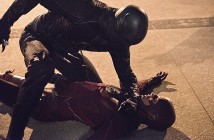Season 1 of True Detective was a piece of television wizardry. Creator Nic Pizzolatto crafted a profoundly grim story that immediately developed a cult following. With Matthew McConaughey and Woody Harrelson shining in rare television appearances, True Detective added to HBO’s immense body of work. If you already watched Season 1, consider watching it again. Subliminal messages, plot points, and literary allusions that escaped your notice the first time are easier to see during a second viewing of this timeless tale. Major spoilers are contained in the following five reasons to give Season 1 of True Detective another viewing.
In becoming Rust Cohle, an emotionally tortured detective mourning both the loss of his daughter and the madness of mankind, McConaughey transformed himself into a memorable expression machine.
Time-shifting platforms through a television lens don’t usually work admirably well. They have the tendency to become overly confusing and just plain frustrating. In True Detective, this structure was not only fitting, but perfect. In the past, Cohle was on the rails and nearly resembled a zombie. Eight years later, he became that zombie. A long-haired, mustached, beer-drinking speaker of philosophical depth. Marty Hart, Cohle’s partner who was played by Harrelson, was a womanizing, selfish man in the past. Down the road, he showed regret and plenty of perspective. This structure gave the two leads, and True Detective in its entirety, added power.
With True Detective‘s first viewing, audiences had to focus on directorial subtleties and an expansive list of evil-doing suspects. No need for that a second time through. We know Reggie Ledoux was a meth-cooking child abuser. We know the Tuttle and Childress families developed a sophisticated web to lure innocent victims and commit unspeakable evil. That’s understood. This leaves room to focus on Cohle’s ambitious pursuit of Ledoux and interest in the Tuttle’s. It also opens the door to witness Hart’s odd father-in-law and the likelihood that Hart’s daughter was sexually abused in childhood. Evil that was assumed becomes accepted. Things you wondered are clarified.
Despite being a world class detective, Cohle was a drug-abuser of epic proportions. He literally never slept. When he wasn’t investigating new crimes or pursuing leads in unprofessional manners, Cohle read literature on other crimes and spent solitary time pondering the existence of man. His apartment featured wide, blank walls, with a figure of Jesus Christ nailed to the cross above his bed, even though he wasn’t religious. Cohle’s mindset likely spiraled into darkness after his daughter’s passing. Working undercover in the drug world worsened matters. To confirm his rightfully jaded life view, he inputted drugs, alcohol, and chaos into his tormented, existential brain.
Errol was a vivid villain whose limited screen time exploded in True Detective‘s satisfying finale. Cohle and Hart tracked down his house. As Hart roamed inside the sloppy home, Cohle followed Errol down a twisting path. The climax is the show’s best moment. Errol stabbed Cohle, lifted him in the air, but Cohle responded. Boom. Boom. Boom. Boom. Four headbutts from Cohle to the overweight pedophile. This bought Hart time to catch up, shoot Errol, only to have Errol throw a hatchet into Hart’s chest. Then a kick to the face. As Errol moved to murder the unconscious Hart, Cohle shot a chunk of Errol’s head off. Victory for the beloved partners in the most gruesome method imaginable.



